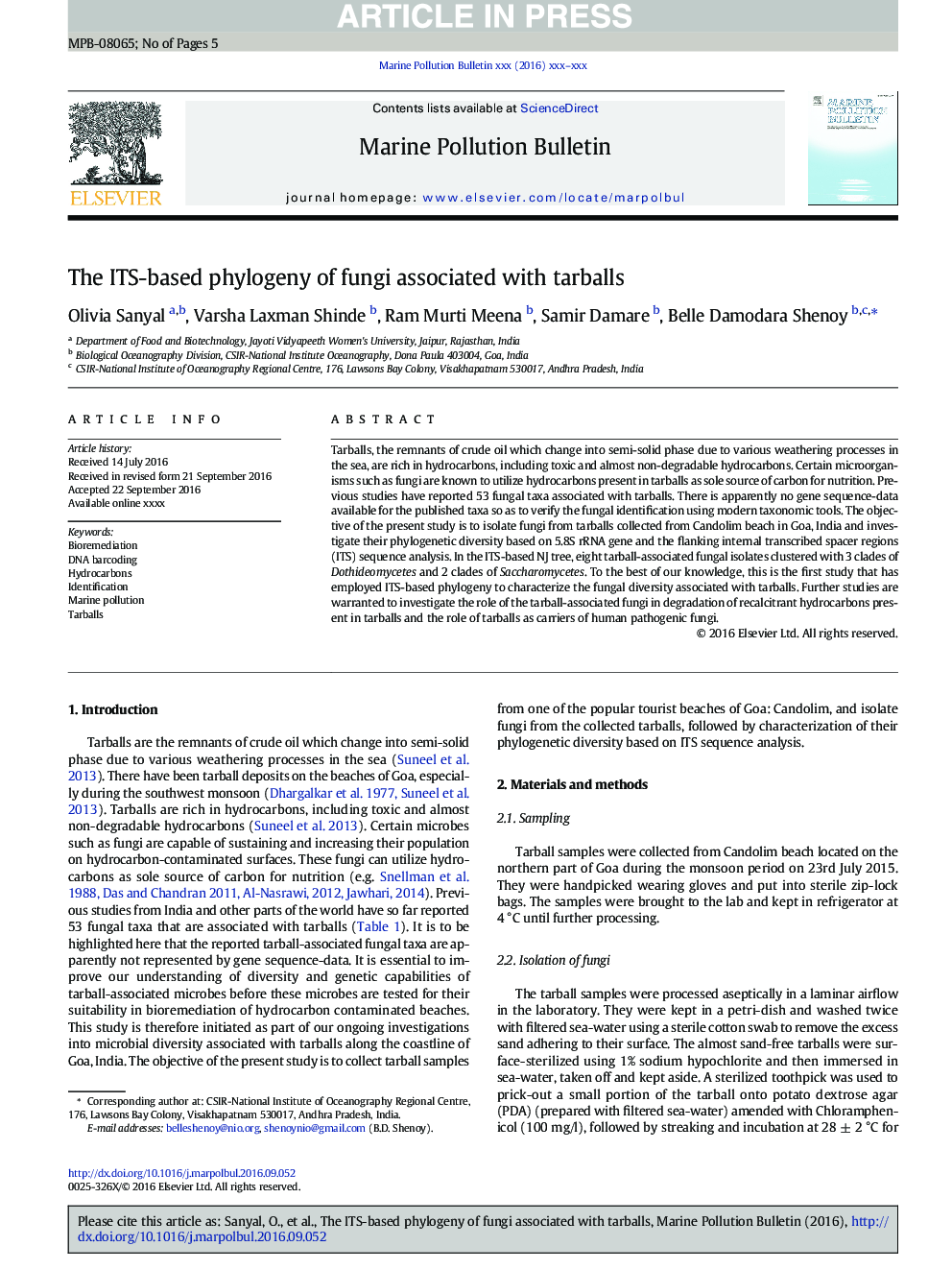| Article ID | Journal | Published Year | Pages | File Type |
|---|---|---|---|---|
| 5757873 | Marine Pollution Bulletin | 2016 | 5 Pages |
Abstract
Tarballs, the remnants of crude oil which change into semi-solid phase due to various weathering processes in the sea, are rich in hydrocarbons, including toxic and almost non-degradable hydrocarbons. Certain microorganisms such as fungi are known to utilize hydrocarbons present in tarballs as sole source of carbon for nutrition. Previous studies have reported 53 fungal taxa associated with tarballs. There is apparently no gene sequence-data available for the published taxa so as to verify the fungal identification using modern taxonomic tools. The objective of the present study is to isolate fungi from tarballs collected from Candolim beach in Goa, India and investigate their phylogenetic diversity based on 5.8S rRNA gene and the flanking internal transcribed spacer regions (ITS) sequence analysis. In the ITS-based NJ tree, eight tarball-associated fungal isolates clustered with 3 clades of Dothideomycetes and 2 clades of Saccharomycetes. To the best of our knowledge, this is the first study that has employed ITS-based phylogeny to characterize the fungal diversity associated with tarballs. Further studies are warranted to investigate the role of the tarball-associated fungi in degradation of recalcitrant hydrocarbons present in tarballs and the role of tarballs as carriers of human pathogenic fungi.
Related Topics
Physical Sciences and Engineering
Earth and Planetary Sciences
Oceanography
Authors
Olivia Sanyal, Varsha Laxman Shinde, Ram Murti Meena, Samir Damare, Belle Damodara Shenoy,
